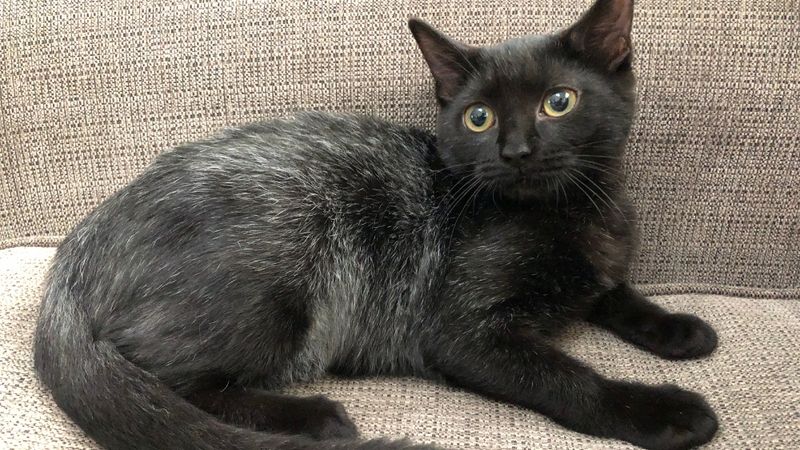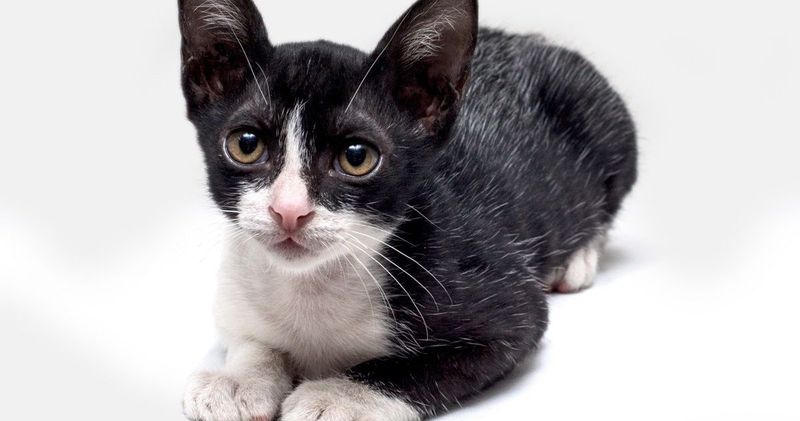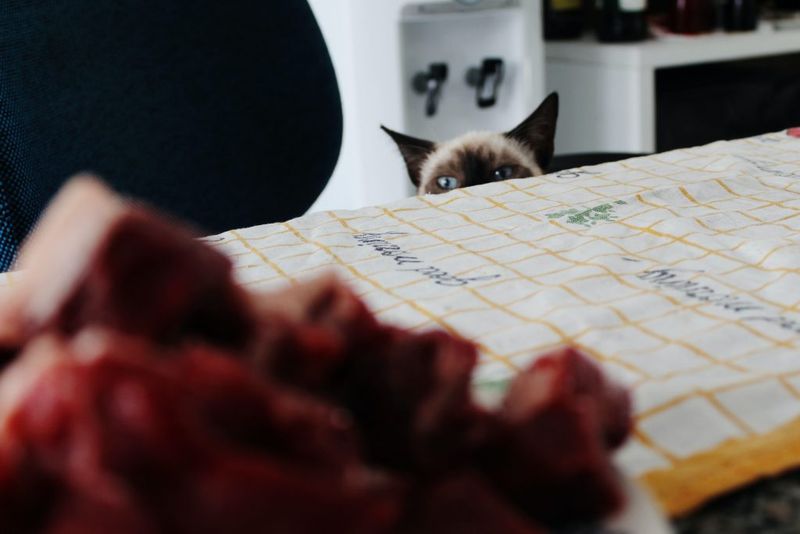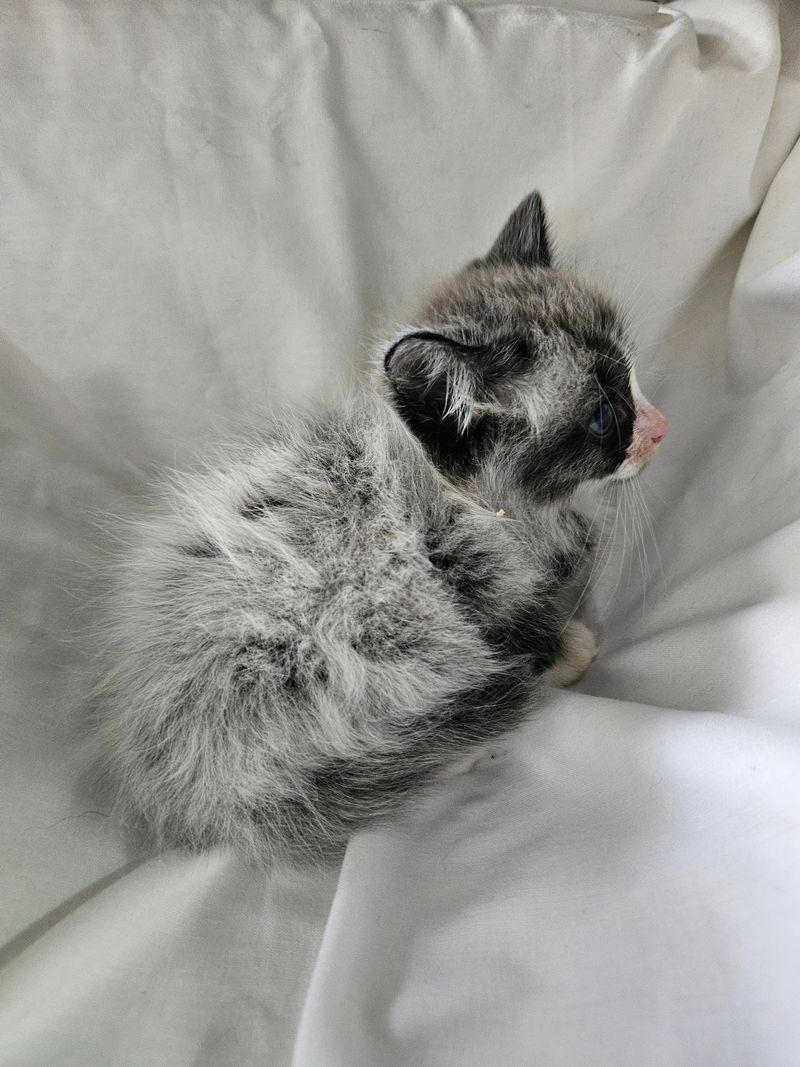📖 Table of Content:
Have you ever seen a kitten with a silvery, smoky, or oddly pale coat that doesn’t quite match its breed or parents? This striking and mysterious appearance is often due to a phenomenon known as fever coat. While it may look unusual—even enchanting—it’s actually a temporary condition linked to what the kitten experienced before birth. Fever coat is not a disease, but rather a visible sign that something may have disrupted normal pigment development while the kitten was still in the womb.
Fever coat typically fades over time, with the kitten’s natural coat color gradually emerging over the first few months of life. Although the condition is harmless to the kitten itself, it can be an indicator that the mother cat (queen) went through a period of stress, illness, or other physiological challenges during pregnancy. Understanding the root causes of fever coat can help breeders, pet owners, and foster caretakers better care for both queens and their litters.
In this article, we’ll explore 7 common causes behind fever coat in cats—from maternal illness and high fevers to nutritional deficiencies and environmental stress. Knowing these factors not only helps demystify the condition but also provides insight into how to create a healthier, more stable environment for pregnant cats and their kittens.
1. Maternal Illness During Pregnancy
When a pregnant cat falls ill, her developing kittens can be impacted in subtle yet significant ways. A viral or bacterial infection during early gestation may interfere with how the kittens’ pigment cells form. As a result, the hair that grows in can appear lighter, muted, or even silver. Fever coat is often the outward clue that something disrupted normal pigment production in utero. While the kittens themselves may be healthy, their unusual fur color reveals a stressful prenatal environment. Veterinarians frequently see this in litters born after the queen had upper respiratory infections or fevers. This condition is more about what happened to the mother, rather than the kitten. Because of this, tracking the queen’s health history can offer key insights.
2. High Fever in the Queen
Nothing alters a developing kitten’s pigment quite like a spike in the mother’s body temperature. If a queen experiences a prolonged or severe fever, it can interrupt the melanin formation in the growing fetus. These fevers act almost like a developmental “pause button” during a critical window. As a result, the kittens may emerge with discolored or silver-toned fur, even if genetically expected to be dark or richly colored. This fever doesn’t have to be long-lasting—sometimes a single high spike is enough. Unlike permanent genetic coat patterns, fever coat fades with time, revealing the kitten’s actual color. It’s a fascinating biological response that often surprises first-time cat owners. Monitoring queens for fevers during pregnancy is a key way to reduce this outcome.
3. Stress in the Mother Cat
Stress may not seem like a physical threat, but in pregnant cats, it can have physiological consequences. Hormonal shifts caused by anxiety or fear can subtly impact the development of the fetuses. This internal chemical response may affect pigmentation pathways in unborn kittens. Cats under constant stress—like moving homes, being around aggressive animals, or living in noisy environments—are more likely to produce litters with fever coat. Although stress doesn’t directly harm the kittens, it can indirectly disrupt normal biological processes. These changes are often most noticeable in the kittens’ fur when they are born. Caring for a pregnant cat means minimizing her stressors as much as possible. A quiet, secure environment can make a major difference in litter health and coat development.
4. Exposure to Toxins or Medications
Certain substances a mother cat is exposed to during pregnancy can unintentionally affect her unborn kittens. From flea medications to household cleaners, chemicals can alter the hormonal or pigment balance in the developing fetus. These changes may not cause illness but can result in visual signs like fever coat. Even mild medications or herb-based treatments should be cleared with a vet before being used on a pregnant cat. The skin and fur development stages are highly sensitive to external influences. For kittens, this can mean uneven pigment or a faded, patchy appearance at birth. This temporary condition is a sign of internal developmental interference. Always err on the side of caution with product use during feline pregnancies.
5. Nutritional Deficiencies
Poor diet during pregnancy can have far-reaching effects beyond the mother cat’s own health. Developing kittens rely on essential nutrients, especially for creating cells involved in pigmentation. A lack of folic acid, B vitamins, copper, or other trace minerals may cause improper or incomplete pigment development. Queens who are underfed, fed low-quality food, or who have absorption issues are at higher risk of producing kittens with fever coat. The coat may appear pale, silvery, or inconsistent with the expected genetic color. This is why high-quality prenatal nutrition is so important in breeding or fostering environments. While the condition itself isn’t dangerous, it may indicate broader developmental challenges. Making sure the queen is well-fed and supplemented during gestation can help prevent this.
6. Genetic Factors or Breed Susceptibility
Though fever coat isn’t hereditary in the classic sense, certain lines or breeds may be more sensitive to environmental disruptions. Cats with lighter or diluted coat genetics, like Siamese or Russian Blues, may show fever coat more noticeably when pigment is disrupted. In these breeds, even slight developmental changes can lead to dramatic coat shifts in kittens. Genetics also influence how resilient fetal development is in the face of maternal stress or illness. Some breeders report seeing fever coat more often in specific queen lines, even under similar conditions. While not a definitive cause, genetic susceptibility plays a role. Understanding this can help breeders track and manage reproductive outcomes better. It’s a reminder that nature and nurture often go hand-in-hand in feline development.
7. Environmental Factors
External surroundings play a surprisingly large role in the outcome of a pregnancy. Poor ventilation, overcrowding, loud noise, or temperature fluctuations can all add invisible stress to a pregnant cat. These environmental stressors don’t have to be extreme to make a difference—constant background noise or being caged near unfamiliar animals may be enough. Over time, this chronic stress can affect fetal pigment development, manifesting as fever coat in kittens. Unlike medical issues, these causes are often overlooked because they seem subtle. Yet, a calm, quiet, and enriched environment supports healthy gestation. Kittens born in less ideal settings may show signs of prenatal disruption through their coats. Creating a safe, low-stress space is key for queens to carry healthy, fully pigmented litters.







